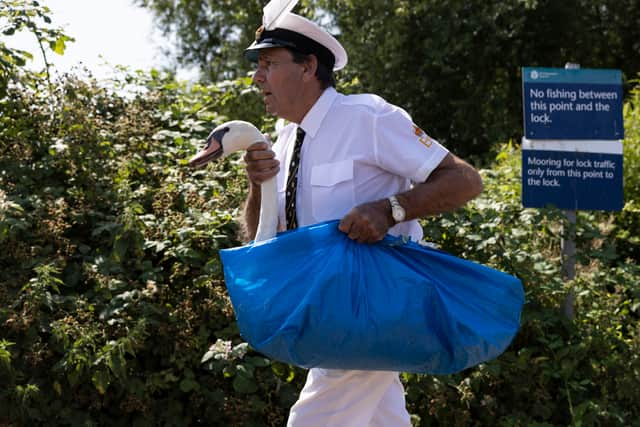Swan Upping: royal cygnet numbers drop 40% in a year - what is the event and how is it marked
and live on Freeview channel 276
There has been a 40% drop in the number of cygnets on the River Thames, compared with last year, according to the Royal Swan Upping.
In a five-day search of the Thames, only 94 cygnets were found, compared to the 155 found last year. This number is the lowest in seven years.
Advertisement
Hide AdAdvertisement
Hide AdThe decline has been blamed on avian flu as well as a growing problem of violence, including shootings, catapult attacks and dogs killing swans.


David Barber, the King's swan marker, said the result was "disappointing". Mr Barber, who is in charge of the count, said that avian flu had been "horrendous, terrible to see" but those who were found were in "good condition".
Swans in the area, from the Thames in London to Abingdon in Oxfordshire, have also had to contend with high flood water washing away nests.
What is Swan Upping?
Swan Upping is an annual ceremony in England, where mute swans are rounded up, caught, ringed and then released.
Advertisement
Hide AdAdvertisement
Hide AdThis was the first annual Swan Upping under King Charles III, and is a tradition with roots in the 12th century, as the Crown protects its ownership of swans. Birds were considered a symbol of status and a culinary delicacy, and to own them, a swan mark needed to be bought from the government. To protect the birds as a commodity, the Crown declared any unmarked swans in open waters belonged to them.
However, now Swan Upping acts as a census, to check their health and population. The event usually occurs in the third week of July.
Historically, the ownership of swans in a body of water was granted to landowners up to the 16th century. Now, only two livery companies (London's modern trade associations and guilds) of the City of London still hold their rights, so the ownership of swans in the Thames is shared equally among the Crown, the Vintners' Company and the Dyers' Company.
Over five days, Crown's, Vintners' and the Dyers' respective swan uppers row up the river in skiffs - a traditional wooden rowing boat. Then, any caught by the Crown is left unmarked, except for a ring linked to the database of the British Trust for Ornithology.
Those caught by the Dyers and Vintners receive a similar ring on the other leg.
Comment Guidelines
National World encourages reader discussion on our stories. User feedback, insights and back-and-forth exchanges add a rich layer of context to reporting. Please review our Community Guidelines before commenting.
